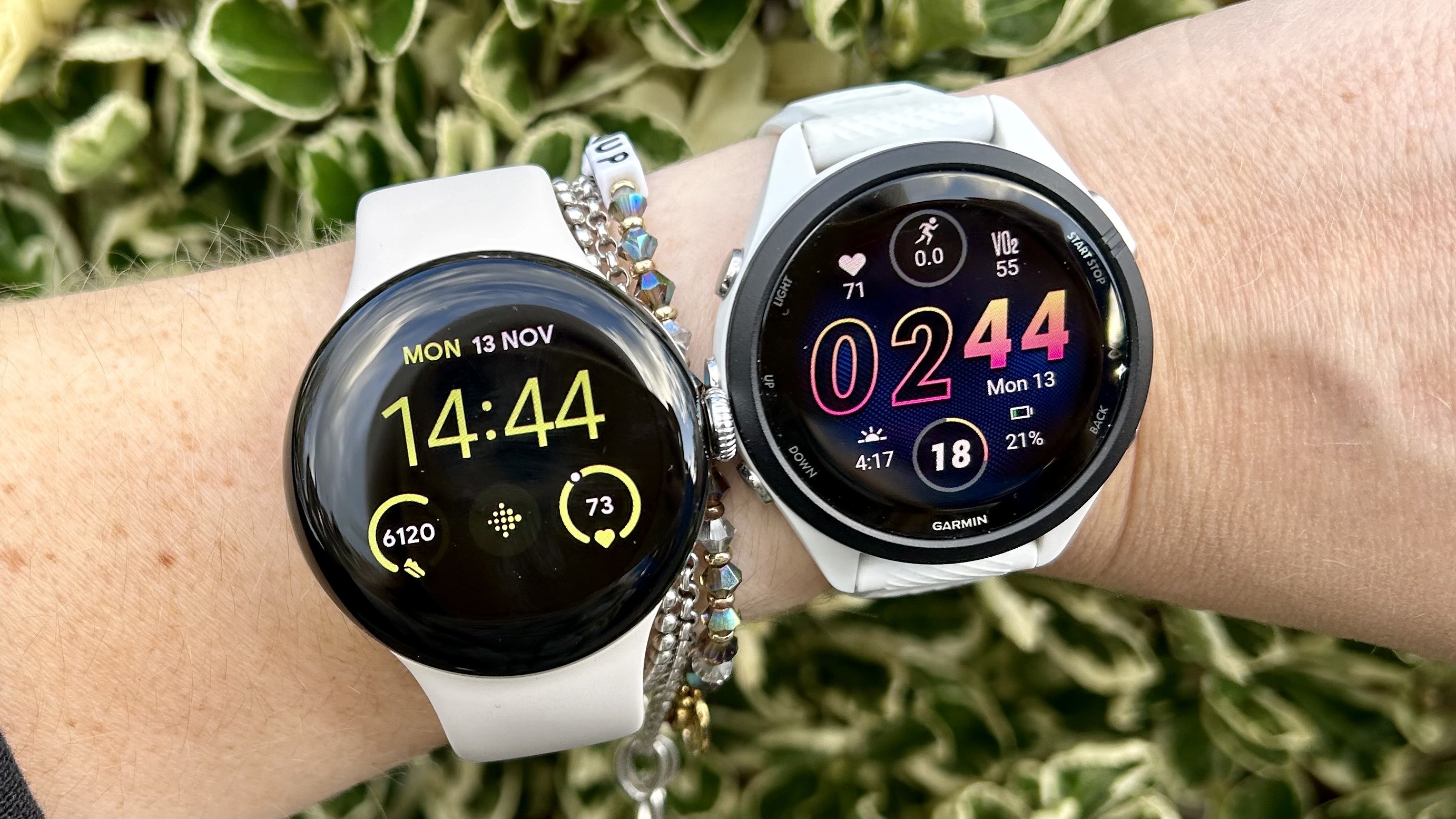I walked 5,500 steps with the Google Pixel Watch 2 and Garmin Forerunner 265 — and one was way more accurate

As a fitness editor, I have tested some of the best GPS sports watches on the market, so when I unboxed the Google Pixel Watch 2, I immediately started comparing it to other watches at a similar price point. I’ve already compared the Google Pixel Watch 2 to the Apple Watch 9 here, but next up on my list, was the Garmin Forerunner 265. It’s one of the best running watches on the market, and if you’re wondering which to buy, I put the two watches head-to-head in this challenge.
Both watches have built-in GPS to accurately record your walks, runs, and bike rides on the go. Whereas the Garmin Forerunner 265 has several of Garmin’s advanced training features, the Google Pixel Watch 2 uses the built-in Fitbit tool to track calories burned, heart rate, and sleep. The Google Pixel Watch 2 costs $349 for the Wi-Fi model and $399 for the LTE model. The Forerunner 265 costs $449/£429 and comes in two different sizes — the Forerunner 265 with a 1.3-inch display, and the Forerunner 265S with a 1.1-inch display.
As my initial test, I decided to compare the pedometer on both watches. Fans of the Tom’s Guide fitness section will know this isn’t the first time I’ve done this — I walked 8,000 steps with the Garmin Forerunner 265 and Apple Watch 9 here. Read on to find out which watch came out on top.
I walked 5,500 steps with the Google Pixel Watch 2 and Garmin Forerunner 265 — and one was way more accurate
For this step count test, I followed the same testing criteria — I strapped one watch to either wrist and used a $5.99 tally counter tool from Amazon, clicking every time I took a step. When I got home I downloaded the data to my phone and compared the estimated step count of both of the watches. Both watches track how many steps you’ve taken by using an internal accelerometer, which measures the swing of your arm. Each swing counts for two steps.
Both watches recorded a walk of 2.6 miles, which took me around 45 minutes to complete. However, there was a difference between the number of steps each watch thought I’d taken. Here are the results...
The results
| Header Cell - Column 0 | Steps counted |
|---|---|
| Manual counter | 5,500 |
| Google Pixel Watch 2 | 5,336 |
| Garmin Forerunner 265 | 5,506 |
As you can see from the results, the Garmin Forerunner 265 was pretty much spot on when it came to counting my steps, only over-estimating my step count by six steps. The Google Pixel Watch 2, on the other hand, missed 164 steps. Of course, no fitness tracker will be 100% accurate, and 164 steps isn’t enough to write the Pixel Watch 2 as unreliable. Of course, to truly test the accuracy of the two watches, you’d need to do a lot more testing on a much bigger scale, but I was impressed at how pretty much spot-on the Forerunner 265 was.
Of course, there’s a huge difference between the two watches. The Garmin Forerunner 265 is positioned as more of a sports watch. Compared to the Google Pixel Watch 2, Garmin's device has a lot of advanced fitness tracking metrics; if you’re after a smartwatch, though, the Forerunner 265 falls short. On the other hand, the Pixel Watch 2 is one of the best smartwatches on the market.
Get instant access to breaking news, the hottest reviews, great deals and helpful tips.
What’s more, both of these fitness trackers do a lot more than just count your steps — they can both track your heart rate, calories burned, and sleep. That said, like with all of the best Fitbits, to get full access to all of the data the Google Pixel Watch 2 records, you’ll need to pay for a Fitbit Premium membership. You get six months free when you register your new device, but after that, you’ll have to pay $9.99 per month, or $80 a year.
That said, if you’re looking to lose weight, build muscle, and improve your mental health, walking more is a good place to start. Getting more steps can be as simple as taking the stairs not the elevator, getting off the subway a stop early when commuting to the office, or even investing in one of the best under-desk treadmills and walking while you work. Here’s what 30 minutes of walking each day can do for your body, and how to lose weight and get in shape by walking.
More from Tom's Guide
- I walked 5,000 steps with Apple Watch 9 and Fitbit Charge 6 — and this was more accurate
- How to lose weight and get in shape by walking
- The best walking workouts to add to your routine

Jane McGuire is Tom's Guide's Fitness editor, which means she looks after everything fitness related - from running gear to yoga mats. An avid runner, Jane has tested and reviewed fitness products for the past five years, so knows what to look for when finding a good running watch or a pair of shorts with pockets big enough for your smartphone. When she's not pounding the pavements, you'll find Jane striding round the Surrey Hills, taking far too many photos of her puppy.
